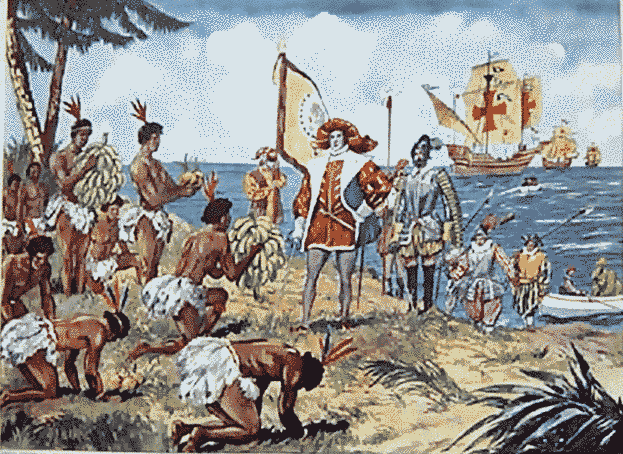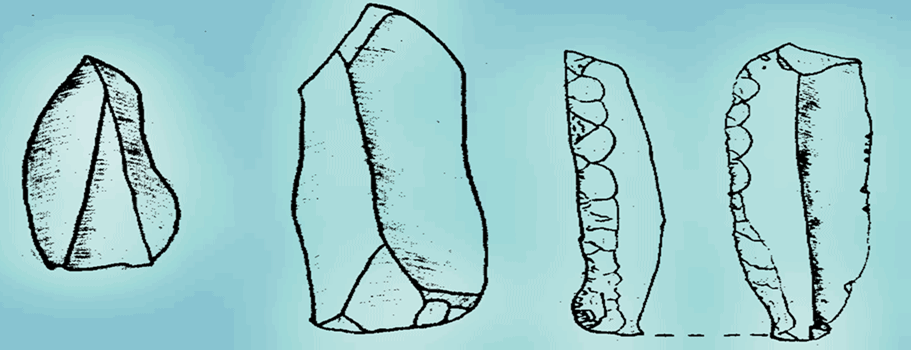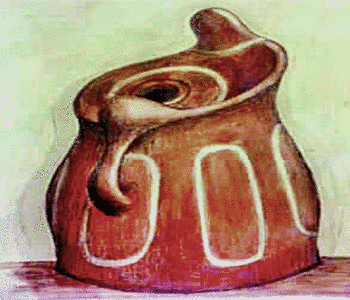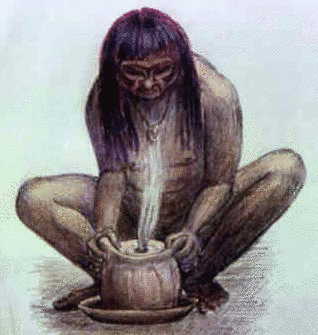Amerindians Arrival & Settlement
Pre-history is the story of a country before the advent of the written word describing that land. Columbus first sighted Antigua on November 11, 1493, when he was sailing past Redonda and named the island he saw "Santa Maria la Antigua" meaning St.Mary the Old. History had then begun!

The prehistory of the Lesser Antilles has considerably changed over the last fifty years due to research made by the International Association for Caribbean Archaeology. Our prehistory may be divided into two periods, the Archaic and the Ceramic.
We do not know the names of the first people living in the Eastern Caribbean Islands as there was no written word available in the west so far back in time as 3,000 years before the birth of Christ, the earliest known date of humankind in Antigua or Barbuda so far.
The First Peoples
We, in Antigua, have been calling these first people the "Siboney" (Cibony). This is erroneous, as Archaic people by that name were only living in Cuba according to historic sources. The first people arrived in large ocean going canoes either from Central America via the Greater Antilles or from South America. Neither direction has yet been proved one way or the other, though the former seems more likely.
Archaic Period
The Archaic people may be defined as a people whose economy was based on hunting, fishing and collecting wild resources, and organized themselves into small bands rather than settling in villages. They used the techniques of chipping and grinding to make tools of stone, bone, and shell, and indeed many of these artifacts have been found in Antigua and Barbuda and can be seen at the Museum.

The oldest and most substantial sites of human occupation in Antigua are to be found at Twenty Hill, Parham (c.2900 BC) and at Jolly Beach (c.1775 BC). In Barbuda, "River," near the Martello Tower, has a known date of 1875 BC. The Archaic tribes of Amerindians lived in Antigua and Barbuda up to about 100 BC, and as the next period started some time before this, there was an overlapping of the two periods.
Ceramic Period
The next period of prehistory is known as the Ceramic Age starting in a minor way about 775 BC. These Amerindians arrived in canoes using the Caribbean Islands as stepping stones as they expanded into the Lesser Antilles. It was in the rivers and estuaries of what is today Venezuela, that the Amerindians had acquired their knowledge of boating and later, around Trinidad, the skills of the sea.

As the name Ceramic Age suggests, the innovation in manufacturing techniques was the firing of the most practical and beautiful pottery. They brought with them as well some measure of agriculture with the cassava root as their main staple. Being farmers they were more sedentary, thus village settlements were established for the first time. There are about one hundred and forty-nine prehistoric sites recorded for Antigua and Barbuda. Of these nineteen are in Barbuda. Seventeen sites in Antigua and Barbuda are ceramic, probably of the Archaic Period.
Within the Ceramic Period, different groups of Amerindians are distinguished archaeologically through different styles of pottery. The first group was of Arawakan origin and much later, at about 1500 AD, it is thought, but not proved, that "Island Caribs" worked their way up the islands. Materialistically, from historic records, and through archaeology, no difference can be found between the original and later people, except that styles of pottery change gradually in time. The later pottery is far less sophisticated and a possible religious symbolic artifact, thezemi, is less frequent.

Carbon Dates For Prehistoric Sites.
At the end of the prehistoric period it seems there were no homogenous Caribs, for in the missionary's dictionary mentioned above, we note the women spoke Arawakan and the men 'Island Carib', making a homogenous people, thus agreeing with archaeology there is little or no difference between them. This brings Antigua and Barbuda's prehistory up to historic times. See a table of carbon dates from the prehistoric period of Waladli Antigua.